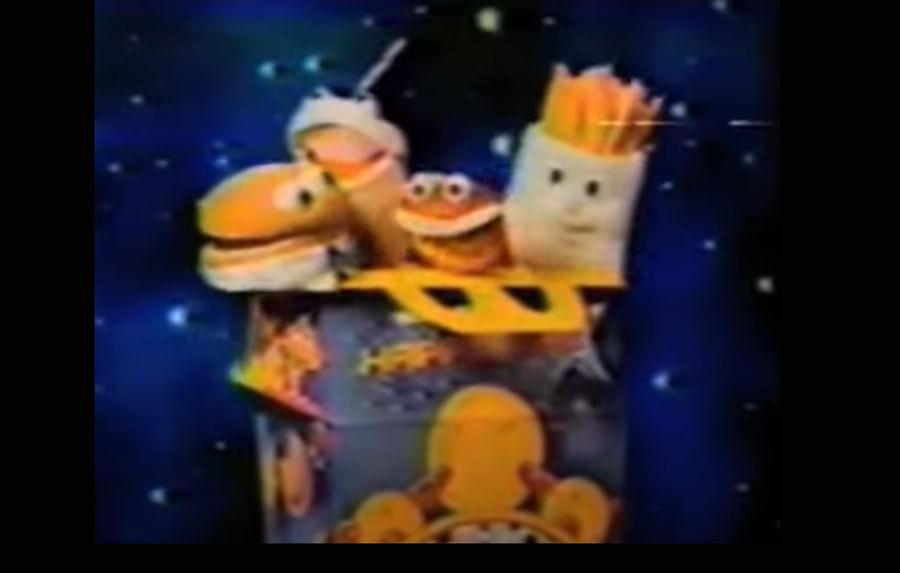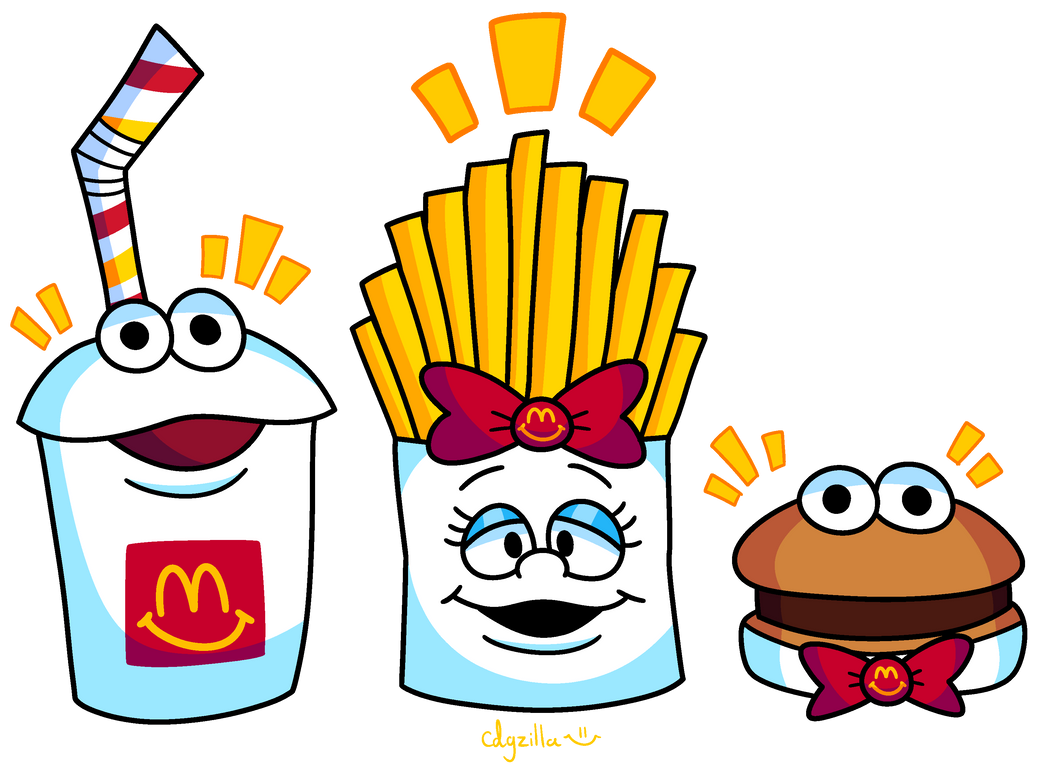The Happy Meal Gang has taken the world by storm, becoming a symbol of unity, nostalgia, and shared experiences among fast-food enthusiasts. McDonald's Happy Meals have long been a staple for children, offering a delightful combination of food and collectible toys. However, in recent years, the Happy Meal Gang has emerged as a global movement that transcends age and borders. This phenomenon has sparked discussions about consumer behavior, brand loyalty, and the power of social media in shaping cultural trends.
What started as a simple fast-food promotion has evolved into a community-driven movement. The Happy Meal Gang is not just about the meals themselves but the sense of belonging and shared joy that comes with it. Members of the gang often gather to exchange toys, share stories, and even organize events centered around their love for Happy Meals.
This article delves into the origins, growth, and impact of the Happy Meal Gang. We will explore the reasons behind its popularity, examine its cultural significance, and discuss its implications for the fast-food industry. Whether you're a long-time member of the gang or simply curious about this phenomenon, this article will provide valuable insights into the world of Happy Meal enthusiasts.
Read also:Unveiling The Power Of Wcaproduction Your Ultimate Guide To Success
Table of Contents
- Origins of the Happy Meal Gang
- Why the Happy Meal Gang Became So Popular
- Cultural Impact of the Happy Meal Gang
- How the Gang is Changing the Fast-Food Industry
- Social Media's Role in the Gang's Growth
- Building a Community Around Happy Meals
- The Role of Toys in the Gang's Appeal
- Happy Meal Gang Statistics and Trends
- The Future of the Happy Meal Gang
- Conclusion: Join the Gang!
Origins of the Happy Meal Gang
The Happy Meal Gang traces its roots back to the early days of McDonald's Happy Meals, which were introduced in 1979. Initially designed as a way to attract young customers, these meals quickly became a hit due to their fun packaging and collectible toys. Over the years, the concept evolved, with McDonald's collaborating with popular franchises like Disney, Pixar, and Star Wars to create themed toys that resonated with both children and adults.
By the late 2010s, the Happy Meal Gang began to take shape as a global community. Social media platforms like Instagram and Twitter played a pivotal role in connecting enthusiasts who shared a passion for Happy Meals. Hashtags such as #HappyMealGang and #HappyMeal became viral, drawing attention to the phenomenon and encouraging more people to join in.
How the Gang Formed
The formation of the Happy Meal Gang was organic, driven by the shared excitement over limited-edition toys and exclusive promotions. Members of the gang often document their Happy Meal purchases, sharing photos and videos of their collections online. This collective enthusiasm fostered a sense of camaraderie among participants, regardless of geographical boundaries.
Why the Happy Meal Gang Became So Popular
The popularity of the Happy Meal Gang can be attributed to several factors, including nostalgia, exclusivity, and the influence of social media. For many, Happy Meals evoke fond memories of childhood, making them a comforting and relatable choice. The limited availability of certain toys also adds an element of excitement, encouraging collectors to act quickly before items sell out.
Key Factors Behind the Gang's Success
- Nostalgia: Happy Meals remind people of their childhood, creating an emotional connection to the brand.
- Exclusivity: Limited-edition toys and regional promotions generate buzz and encourage participation.
- Community: Social media platforms provide a space for enthusiasts to connect and share their experiences.
Cultural Impact of the Happy Meal Gang
The Happy Meal Gang has left a significant mark on popular culture, influencing everything from marketing strategies to consumer behavior. Brands have taken notice of the gang's influence, incorporating elements of its success into their own campaigns. For instance, collaborations with popular franchises and the release of exclusive merchandise have become common practices in the fast-food industry.
Moreover, the gang's emphasis on inclusivity and shared joy has inspired other communities to form around similar interests. This cultural phenomenon highlights the power of collective enthusiasm and the ability of social media to amplify grassroots movements.
Read also:What Was Tony Sopranos Net Worth A Comprehensive Analysis
How the Gang is Changing the Fast-Food Industry
The rise of the Happy Meal Gang has forced the fast-food industry to adapt and innovate. McDonald's, in particular, has embraced the movement by launching more engaging promotions and partnering with well-known brands to create buzzworthy products. Other fast-food chains have followed suit, recognizing the value of building strong connections with their customers.
Innovations Inspired by the Gang
- Collaborations with popular franchises and influencers.
- Exclusive regional promotions to cater to local tastes and preferences.
- Interactive marketing campaigns that encourage customer engagement.
Social Media's Role in the Gang's Growth
Social media has been instrumental in the growth of the Happy Meal Gang, providing a platform for members to connect and share their experiences. Platforms like Instagram, Twitter, and TikTok have enabled enthusiasts to showcase their collections, discuss new releases, and organize meetups. This digital presence has helped the gang reach a global audience, expanding its influence beyond traditional boundaries.
According to a report by Statista, social media users spend an average of 2 hours and 25 minutes per day on these platforms. This significant amount of time creates ample opportunities for brands to engage with their audience and foster meaningful relationships. The Happy Meal Gang's success serves as a testament to the power of social media in shaping consumer behavior and driving cultural trends.
Building a Community Around Happy Meals
At its core, the Happy Meal Gang is a community of like-minded individuals who share a passion for Happy Meals. Members of the gang often participate in activities such as toy exchanges, meetups, and online discussions. These interactions help strengthen the bonds between participants, creating a supportive and inclusive environment.
Benefits of Joining the Gang
- Access to exclusive promotions and limited-edition toys.
- Opportunities to connect with fellow enthusiasts from around the world.
- Participation in community-driven events and activities.
The Role of Toys in the Gang's Appeal
Toys play a crucial role in the appeal of the Happy Meal Gang, serving as both a collector's item and a conversation starter. The variety of toys available, ranging from action figures to miniatures, ensures that there is something for everyone. Additionally, the limited availability of certain toys creates a sense of urgency, encouraging collectors to act quickly to secure their desired items.
Research conducted by the Toy Association indicates that collectible toys account for a significant portion of the global toy market, with sales reaching $23.2 billion in 2021. This growing demand underscores the importance of toys in driving consumer engagement and loyalty.
Happy Meal Gang Statistics and Trends
Data and statistics provide valuable insights into the growth and impact of the Happy Meal Gang. According to a survey conducted by McDonald's, over 70% of Happy Meal purchases are made by adults, highlighting the gang's appeal beyond its intended audience. Furthermore, social media analytics reveal that the #HappyMealGang hashtag has been used millions of times across various platforms, demonstrating the movement's widespread reach.
As the gang continues to grow, trends such as regional promotions, themed toys, and interactive marketing campaigns are expected to gain even more traction. These developments reflect the evolving nature of consumer preferences and the fast-food industry's response to changing demands.
The Future of the Happy Meal Gang
The future of the Happy Meal Gang looks promising, with continued growth and expansion anticipated in the coming years. As technology advances and social media platforms evolve, the gang is likely to adapt and innovate, finding new ways to engage its members and attract new participants. Collaborations with emerging franchises and the integration of digital experiences, such as augmented reality, could further enhance the gang's appeal.
McDonald's and other fast-food chains will undoubtedly play a key role in shaping the gang's future, leveraging its influence to drive sales and build brand loyalty. The Happy Meal Gang's success serves as a valuable lesson for businesses, demonstrating the importance of fostering genuine connections with their audience.
Conclusion: Join the Gang!
In conclusion, the Happy Meal Gang represents more than just a love for fast food and collectible toys. It embodies the power of community, nostalgia, and shared joy, bringing people together from all walks of life. By understanding the origins, growth, and impact of the gang, we gain valuable insights into the dynamics of modern consumer behavior and the fast-food industry.
We invite you to join the Happy Meal Gang and experience the excitement for yourself. Share your thoughts in the comments below, engage with fellow enthusiasts on social media, and explore more articles on our website to stay up-to-date with the latest trends and developments. Together, let's continue to grow and celebrate this remarkable cultural phenomenon!


